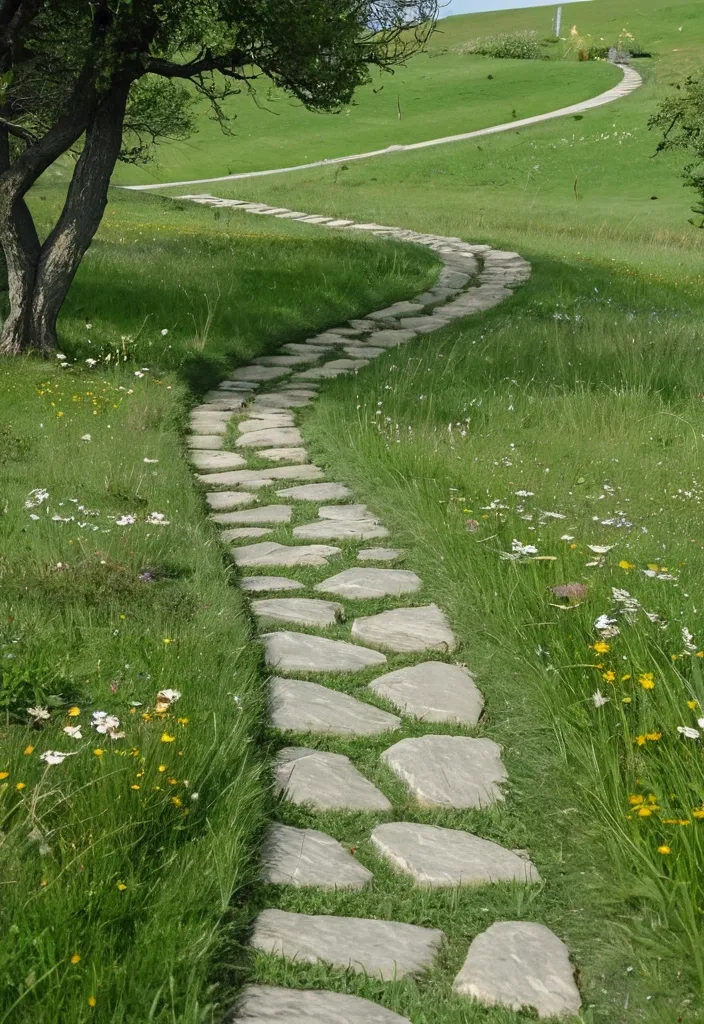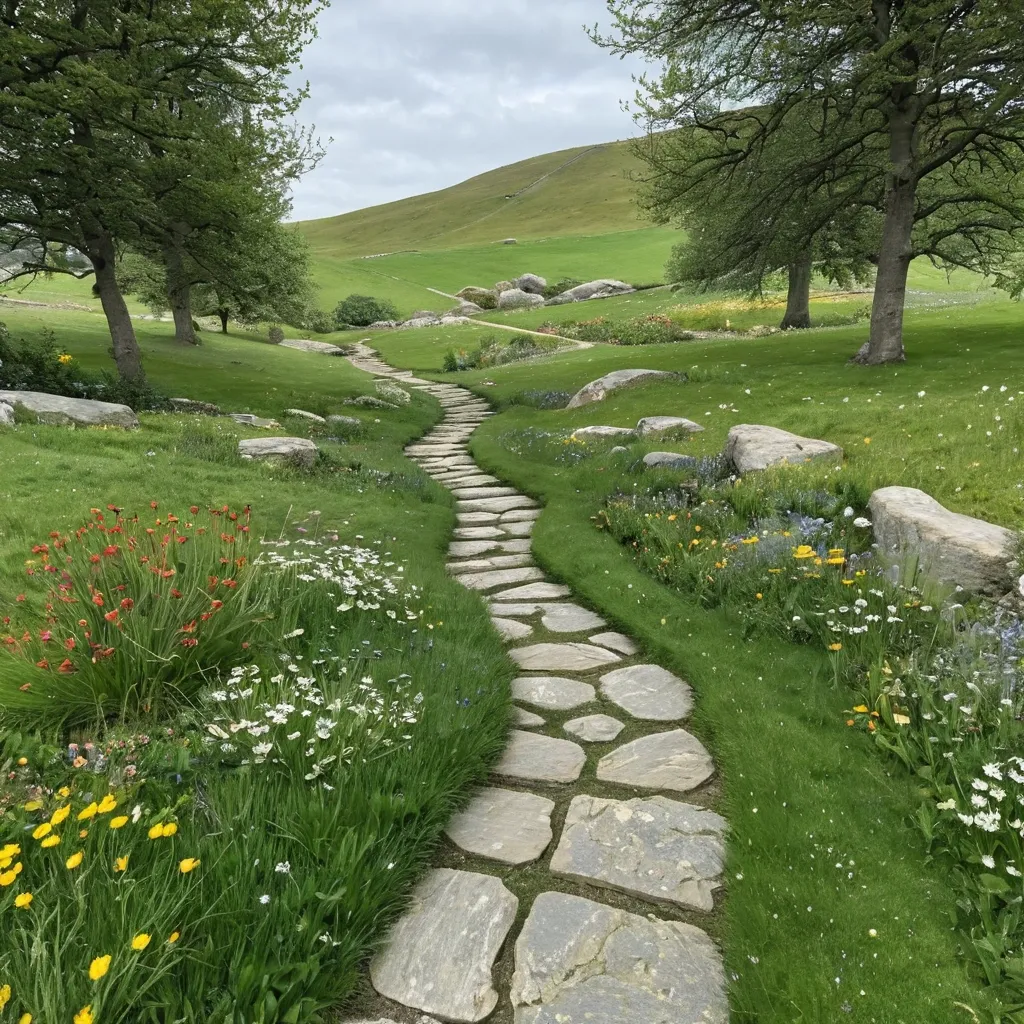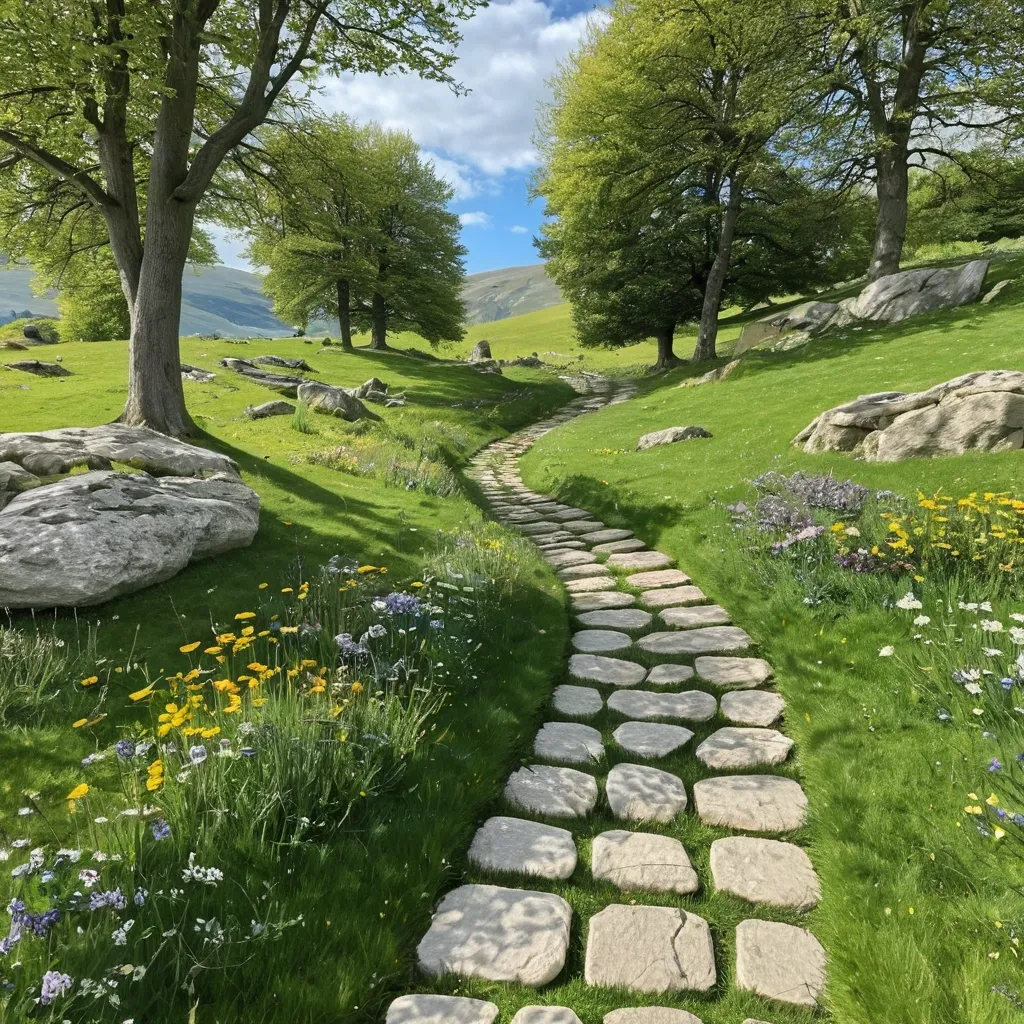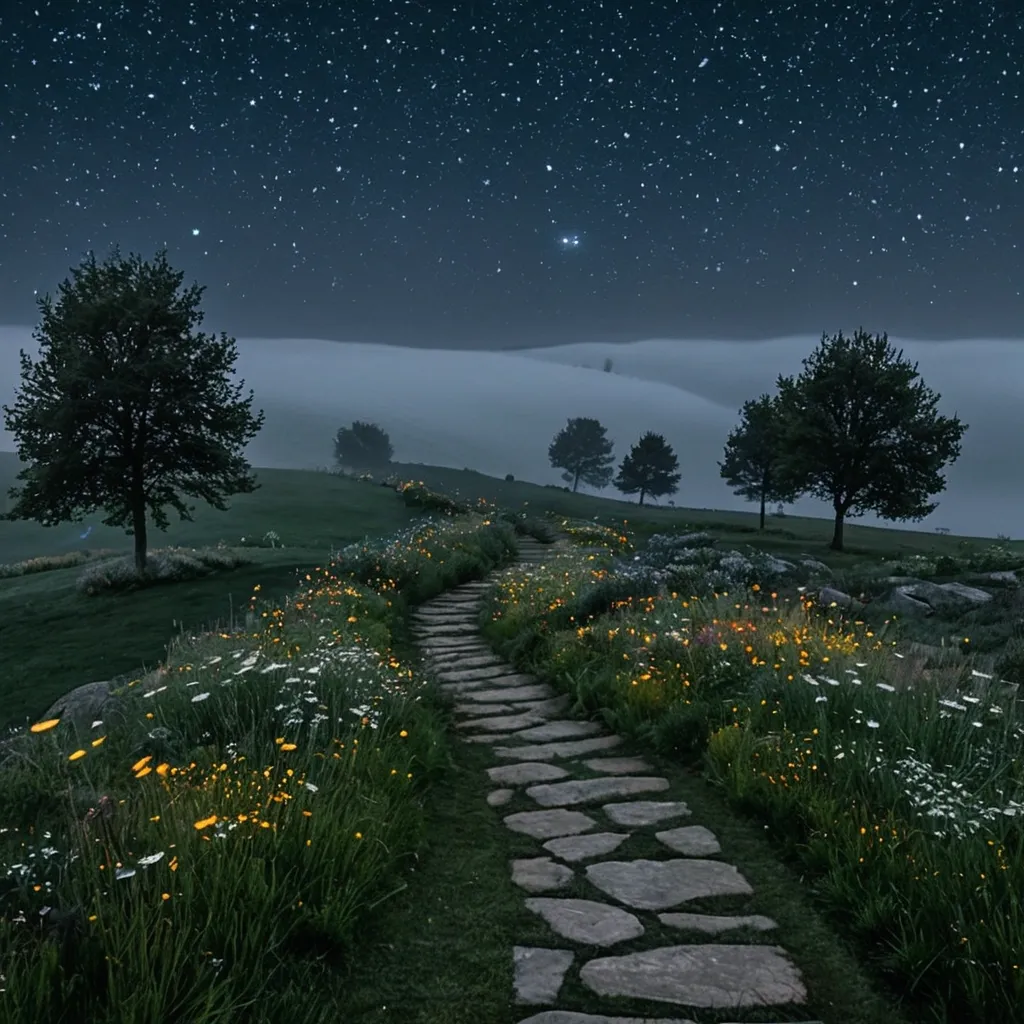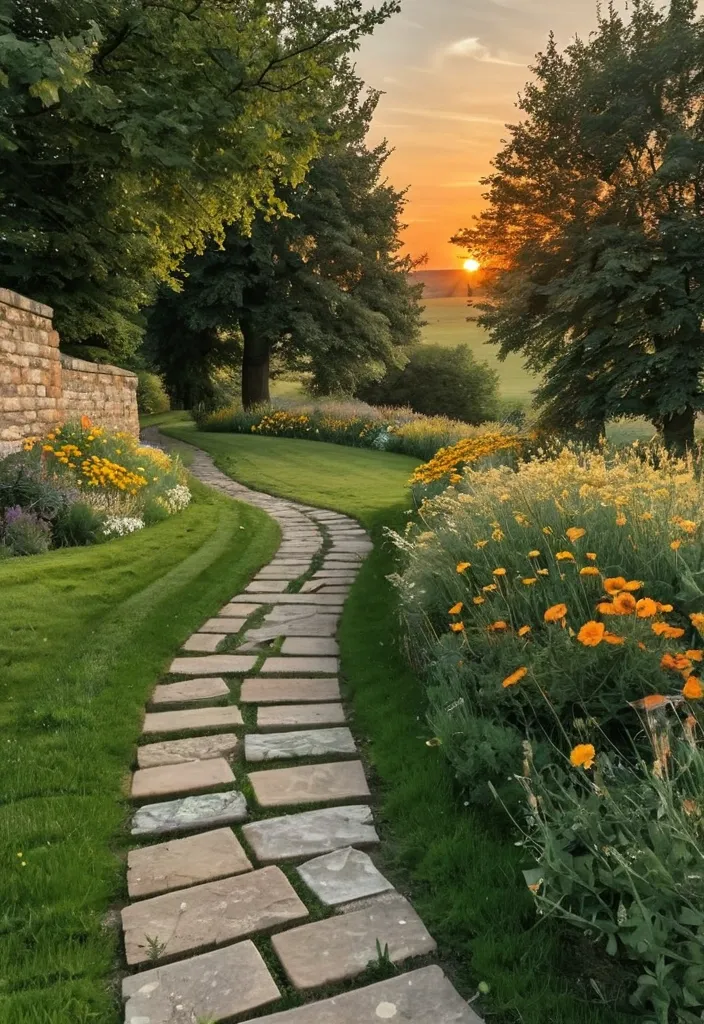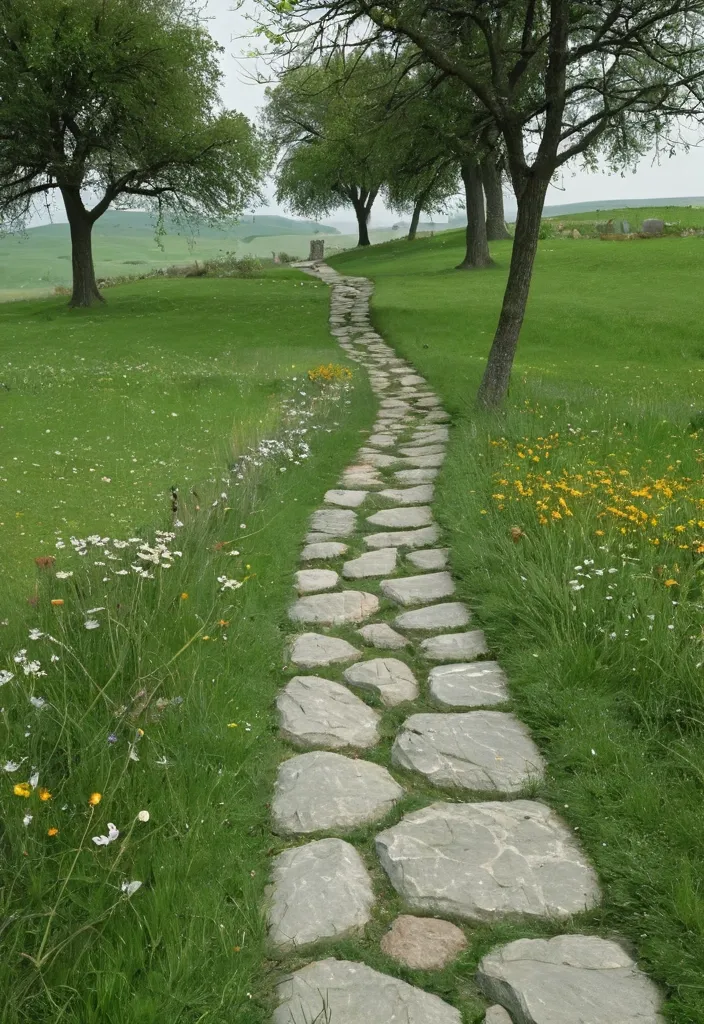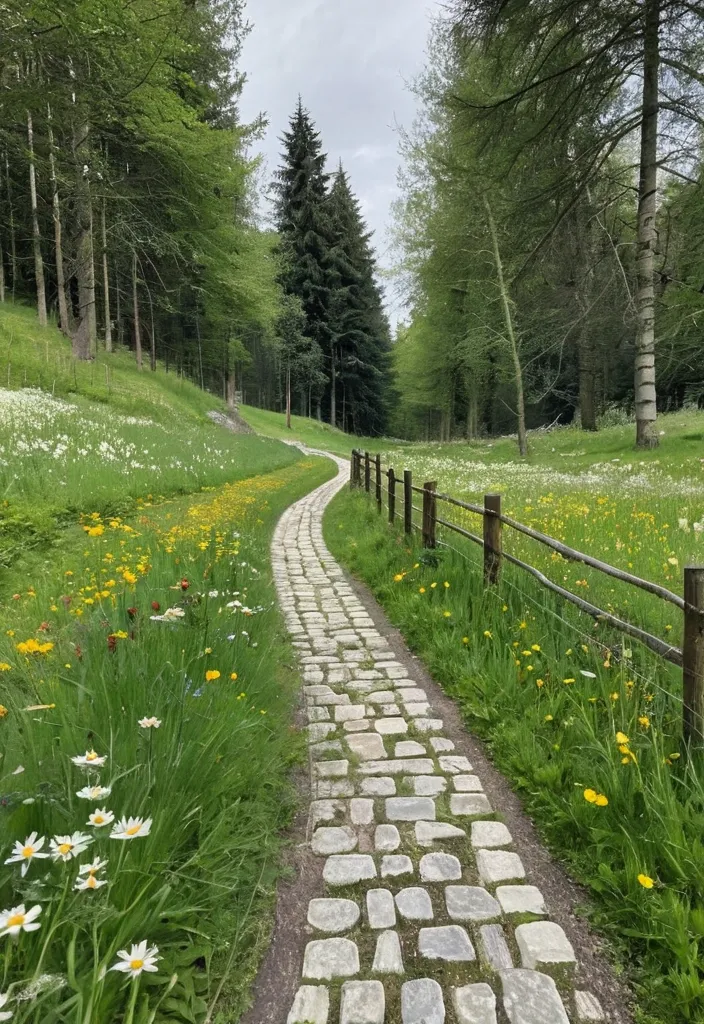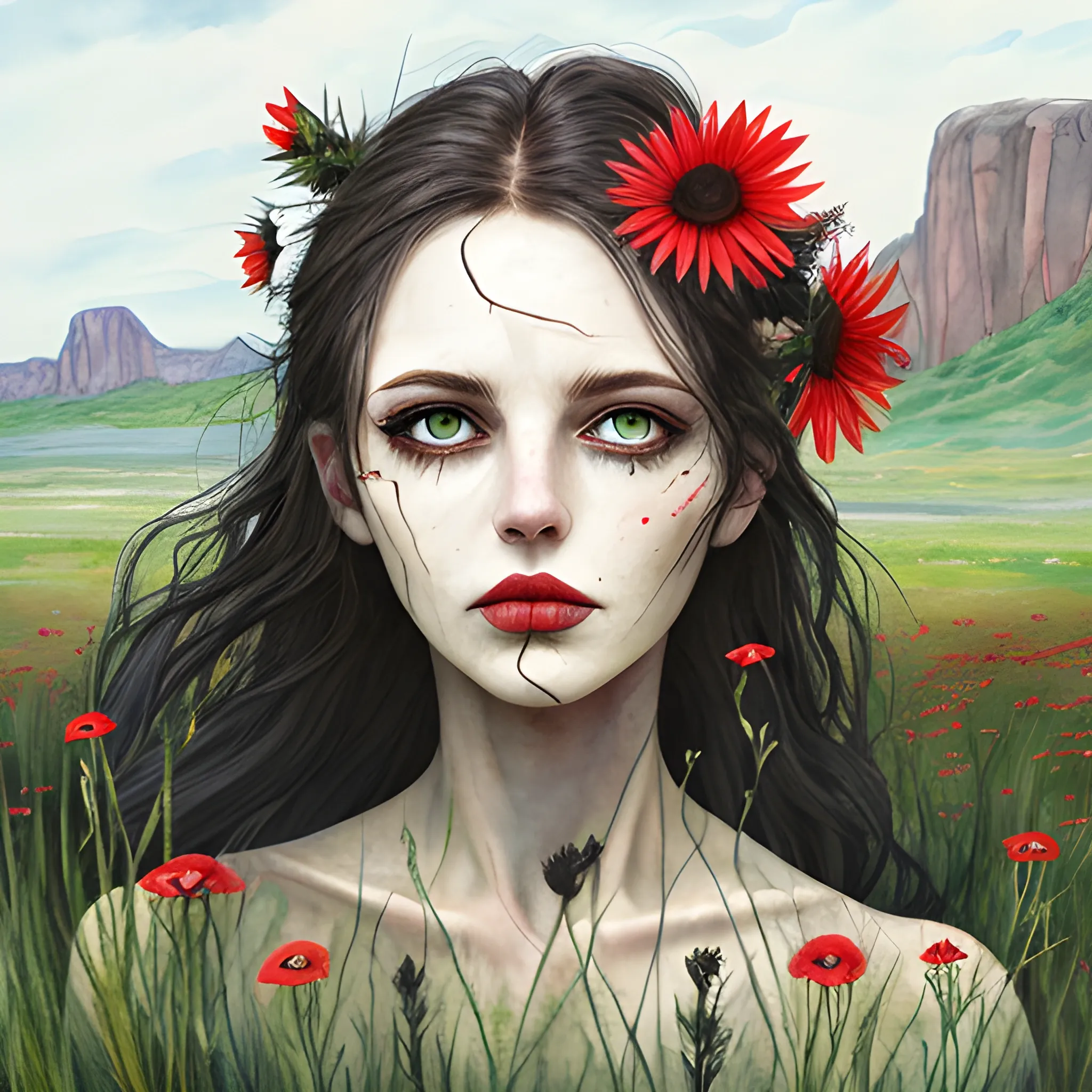Search Results for grassland
Explore AI generated designs, images, art and prompts by top community artists and designers.
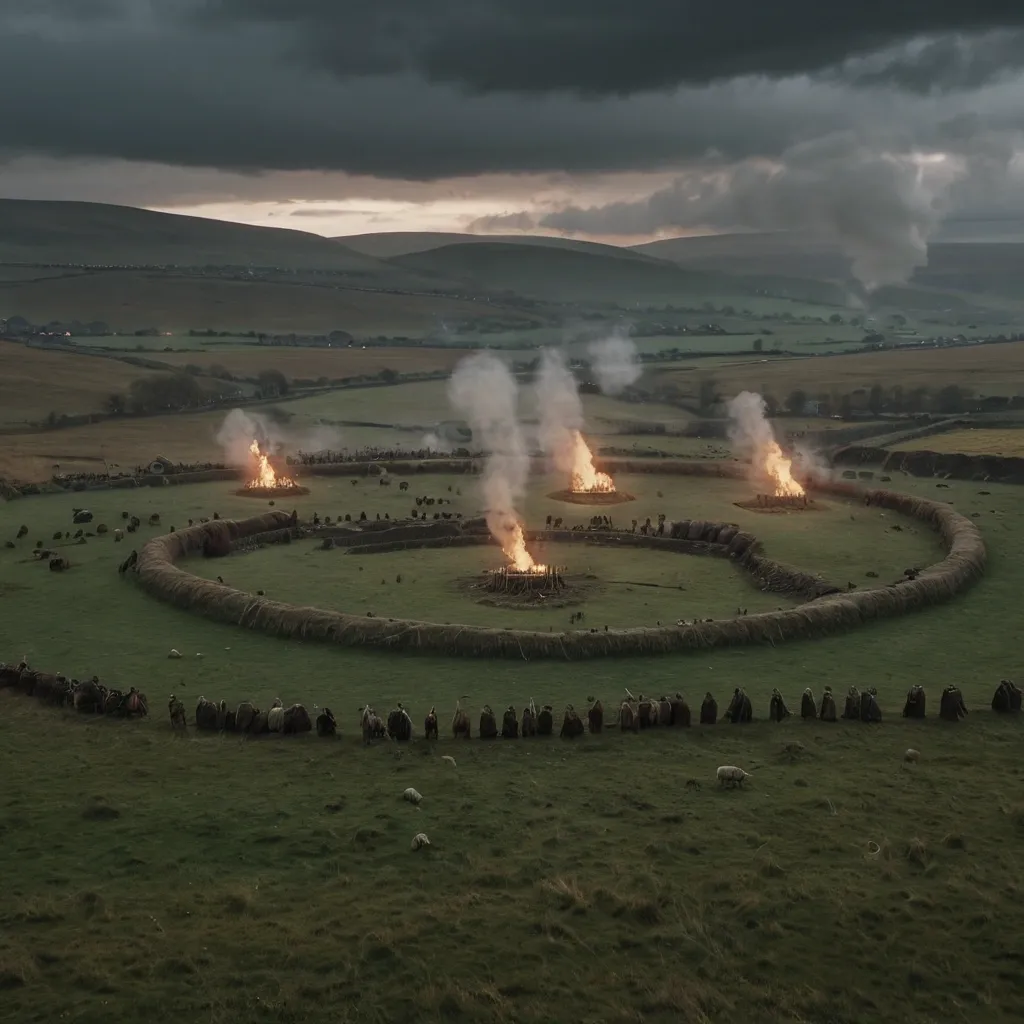
massive standing stones in wide circular formation , earthen banks and ditches , surrounding grassland , villagers in wool and leather garments , smoke rising from roundhouses , herds of sheep nearby , ritual gathering with torches , distant hills under moody sky , dusk , overcast , autumn , Matte Painting , 4K ,
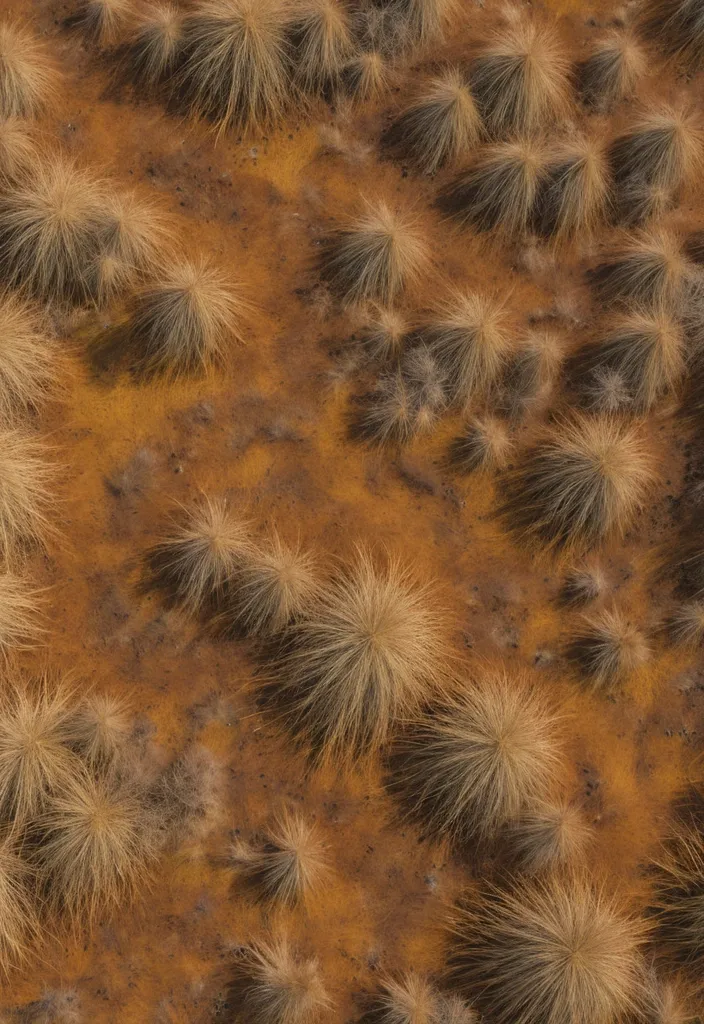
A game-rendered tundra grassland , viewed from a top-down perspective. The grass is predominantly warm golden , rusty orange , and reddish-brown , with subtle variations in tone that create a natural , windswept effect. The texture is dry and rugged , with clusters of denser grass forming soft , irregular mounds , contrasting with flatter , more eroded areas. The grass transitions between thicker tufts and sparser patches , revealing a slightly rough , uneven terrain beneath. There is a sense of natural randomness , where the warmer hues blend seamlessly , creating an organic and slightly rugged tundra aesthetic. ,

A game-rendered tundra grassland , viewed from a top-down perspective. The grass is predominantly warm golden , rusty orange , and reddish-brown , with subtle variations in tone that create a natural , windswept effect. The texture is dry and rugged , with clusters of denser grass forming soft , irregular mounds , contrasting with flatter , more eroded areas. The grass transitions between thicker tufts and sparser patches , revealing a slightly rough , uneven terrain beneath. There is a sense of natural randomness , where the warmer hues blend seamlessly , creating an organic and slightly rugged tundra aesthetic. ,
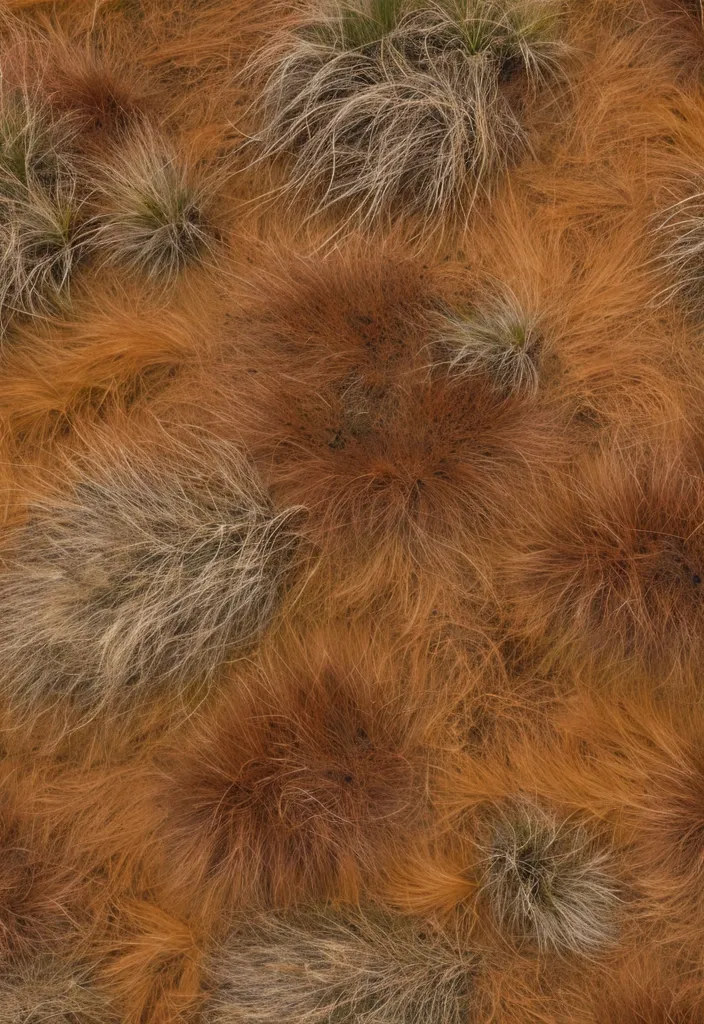
A game-rendered tundra grassland , viewed from a top-down perspective. The grass is predominantly warm golden , rusty orange , and reddish-brown , with subtle variations in tone that create a natural , windswept effect. The texture is dry and rugged , with clusters of denser grass forming soft , irregular mounds , contrasting with flatter , more eroded areas. The grass transitions between thicker tufts and sparser patches , revealing a slightly rough , uneven terrain beneath. There is a sense of natural randomness , where the warmer hues blend seamlessly , creating an organic and slightly rugged tundra aesthetic. ,
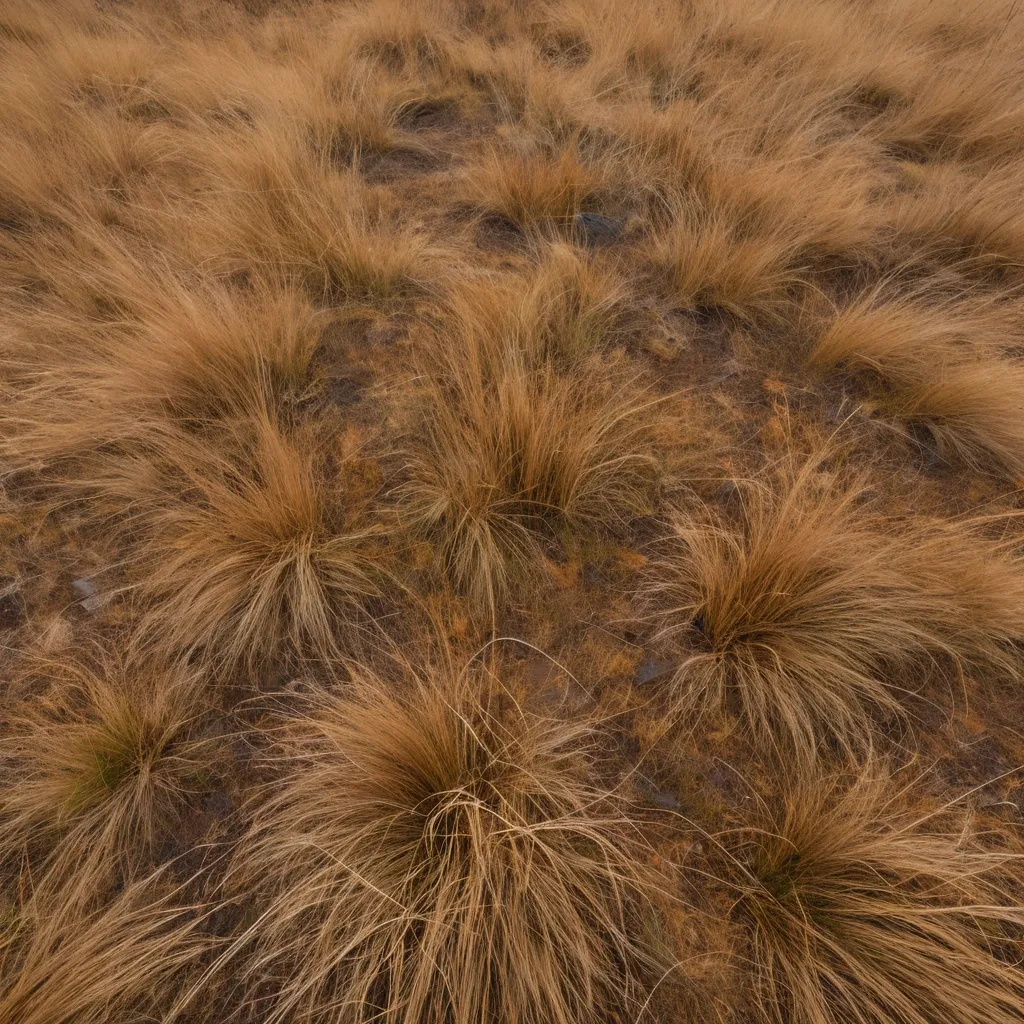
A game-rendered tundra grassland , viewed from a top-down perspective. The grass is predominantly warm golden , rusty orange , and reddish-brown , with subtle variations in tone that create a natural , windswept effect. The texture is dry and rugged , with clusters of denser grass forming soft , irregular mounds , contrasting with flatter , more eroded areas. The grass transitions between thicker tufts and sparser patches , revealing a slightly rough , uneven terrain beneath. There is a sense of natural randomness , where the warmer hues blend seamlessly , creating an organic and slightly rugged tundra aesthetic. ,
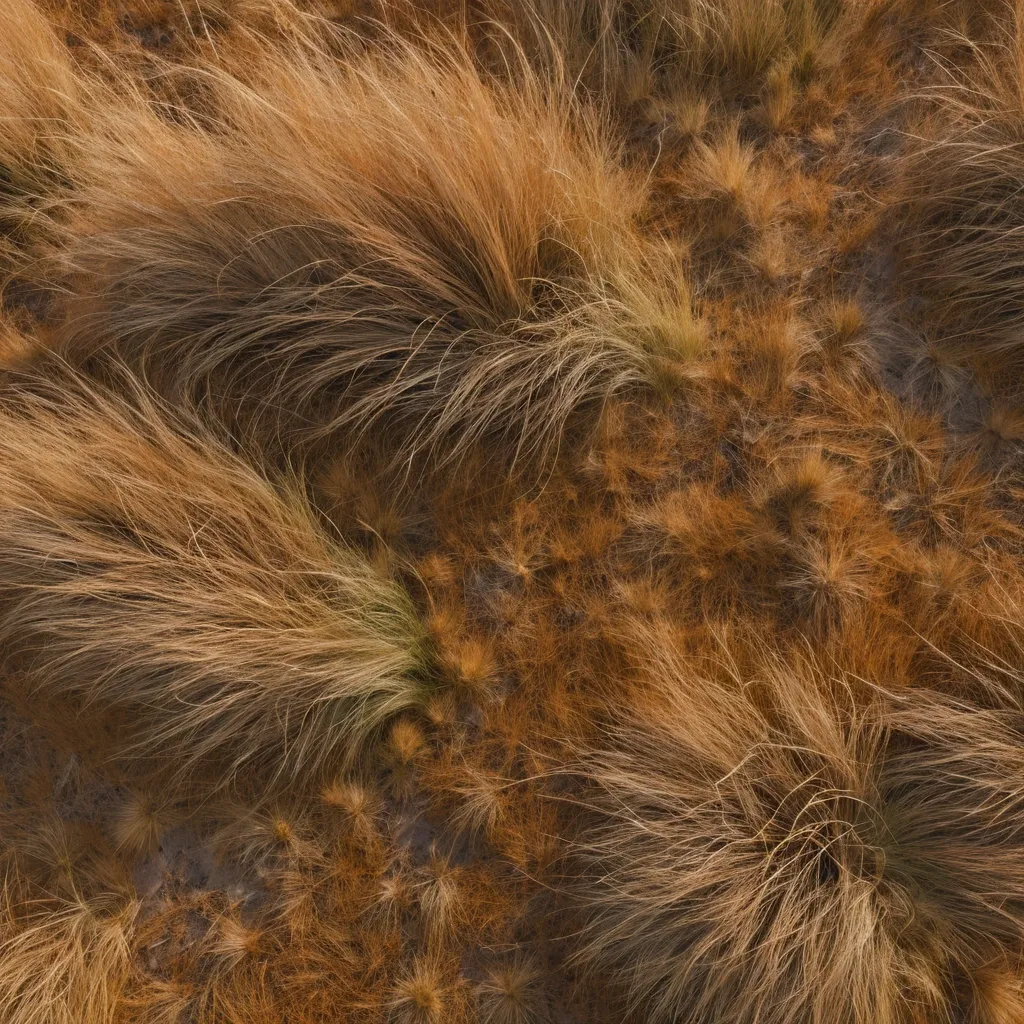
A game-rendered tundra grassland , viewed from a top-down perspective. The grass is predominantly warm golden , rusty orange , and reddish-brown , with subtle variations in tone that create a natural , windswept effect. The texture is dry and rugged , with clusters of denser grass forming soft , irregular mounds , contrasting with flatter , more eroded areas. The grass transitions between thicker tufts and sparser patches , revealing a slightly rough , uneven terrain beneath. There is a sense of natural randomness , where the warmer hues blend seamlessly , creating an organic and slightly rugged tundra aesthetic. ,
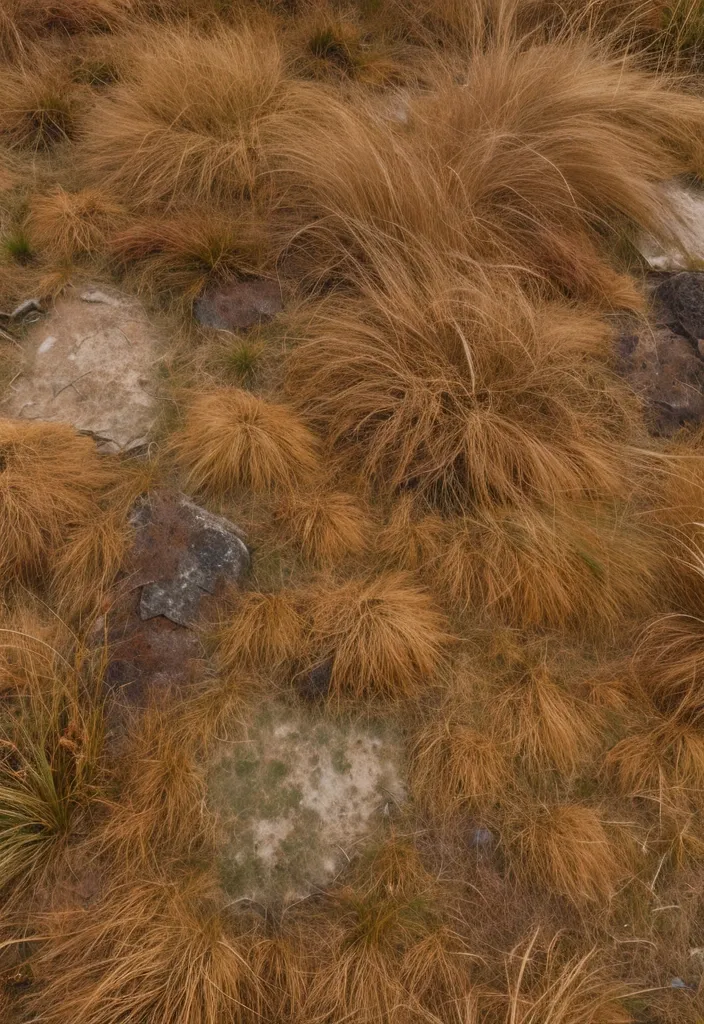
A game-rendered tundra grassland , viewed from a top-down perspective. The grass is predominantly warm golden , rusty orange , and reddish-brown , with subtle variations in tone that create a natural , windswept effect. The texture is dry and rugged , with clusters of denser grass forming soft , irregular mounds , contrasting with flatter , more eroded areas. The grass transitions between thicker tufts and sparser patches , revealing a slightly rough , uneven terrain beneath. There is a sense of natural randomness , where the warmer hues blend seamlessly , creating an organic and slightly rugged tundra aesthetic. ,
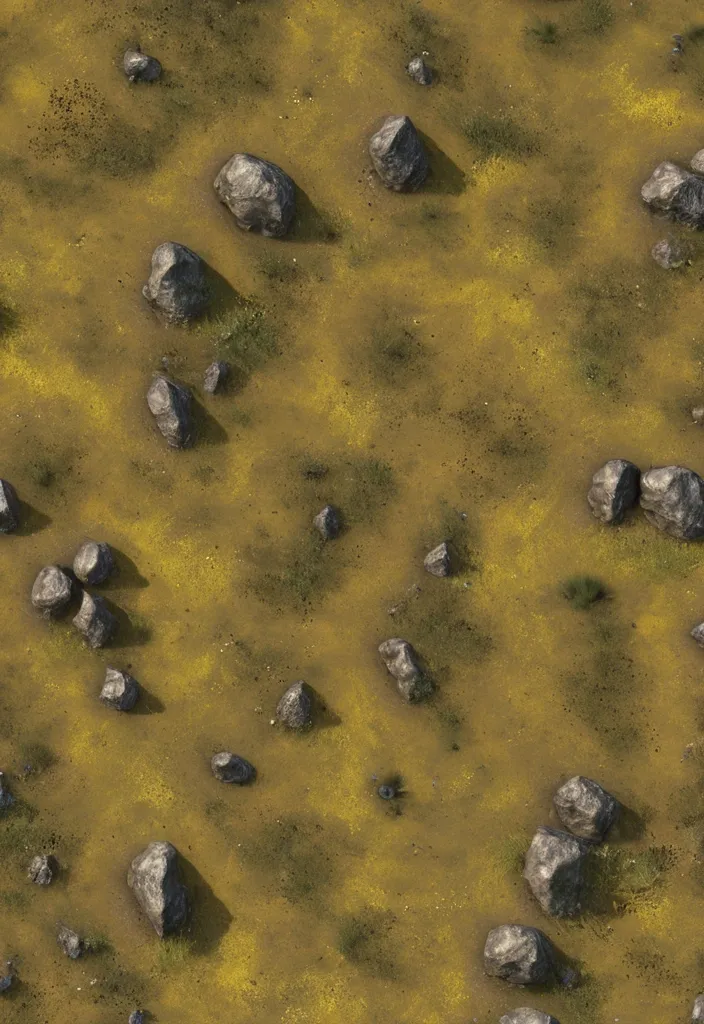
A game-rendered tundra grassland viewed from a top-down perspective. The grass consists of golden-yellow and desaturated brown tones , with subtle variations in hue and saturation , creating a natural yet slightly stylized look. The texture appears soft and dry , with areas of denser grass blending into more sparse patches , where the underlying ground is faintly visible.The distribution of colors forms an organic pattern , with darker , slightly greenish patches near transitions to rocky or barren spots , while the main grassy areas retain a warm , windswept appearance. Some sections appear trampled or eroded , where the grass thins out , revealing a rougher , more muted surface beneath. The texture maintains a balance between chaotic natural randomness and structured , procedural rendering , making it ideal for generating tundra-like terrains. ,
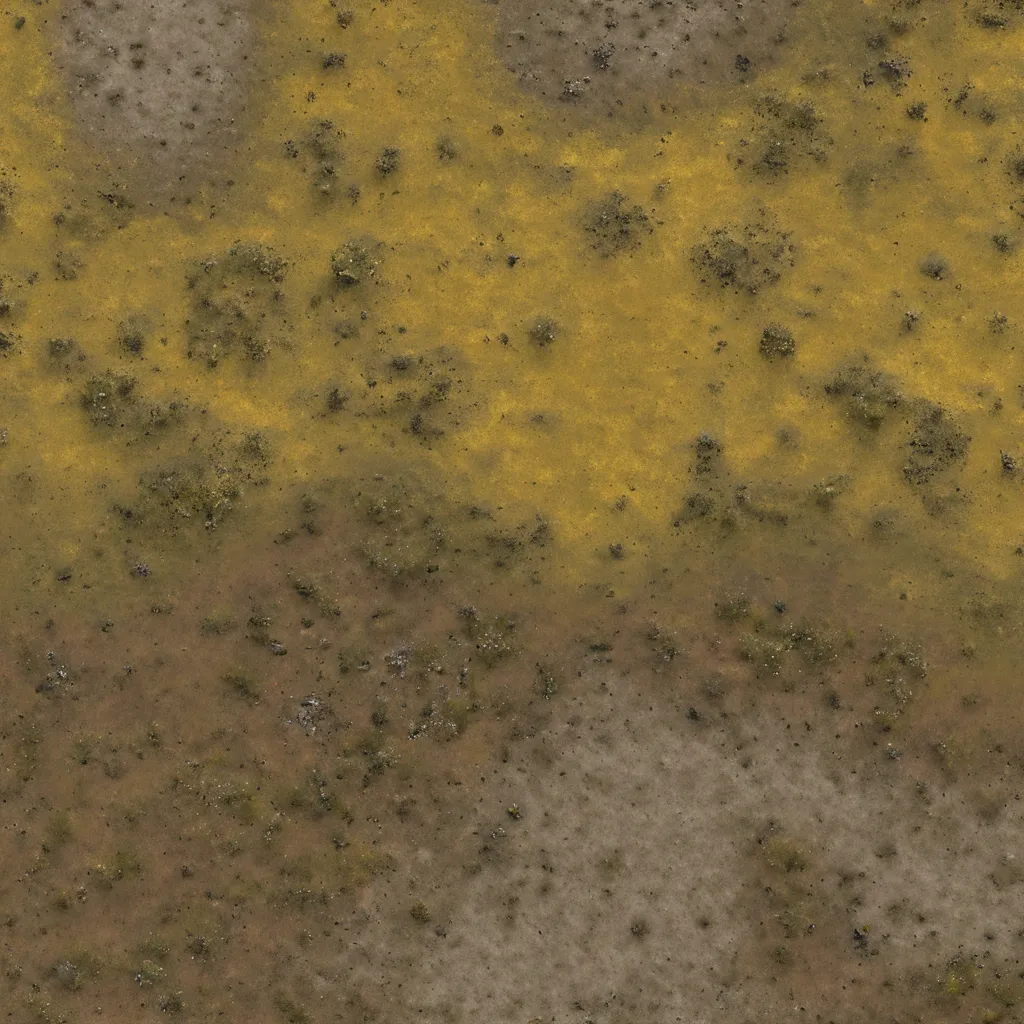
A game-rendered tundra grassland viewed from a top-down perspective. The grass consists of golden-yellow and desaturated brown tones , with subtle variations in hue and saturation , creating a natural yet slightly stylized look. The texture appears soft and dry , with areas of denser grass blending into more sparse patches , where the underlying ground is faintly visible.The distribution of colors forms an organic pattern , with darker , slightly greenish patches near transitions to rocky or barren spots , while the main grassy areas retain a warm , windswept appearance. Some sections appear trampled or eroded , where the grass thins out , revealing a rougher , more muted surface beneath. The texture maintains a balance between chaotic natural randomness and structured , procedural rendering , making it ideal for generating tundra-like terrains. ,
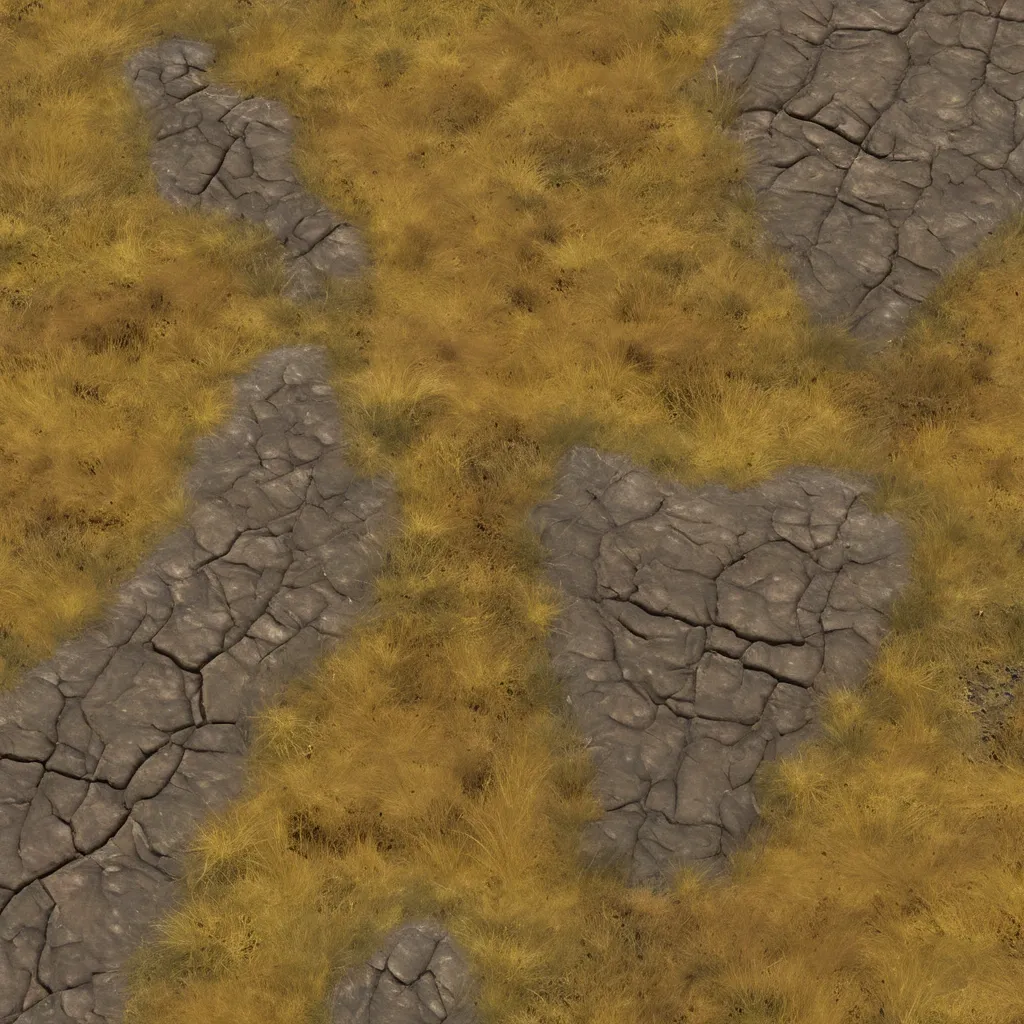
A game-rendered tundra grassland viewed from a top-down perspective. The grass consists of golden-yellow and desaturated brown tones , with subtle variations in hue and saturation , creating a natural yet slightly stylized look. The texture appears soft and dry , with areas of denser grass blending into more sparse patches , where the underlying ground is faintly visible.The distribution of colors forms an organic pattern , with darker , slightly greenish patches near transitions to rocky or barren spots , while the main grassy areas retain a warm , windswept appearance. Some sections appear trampled or eroded , where the grass thins out , revealing a rougher , more muted surface beneath. The texture maintains a balance between chaotic natural randomness and structured , procedural rendering , making it ideal for generating tundra-like terrains. ,
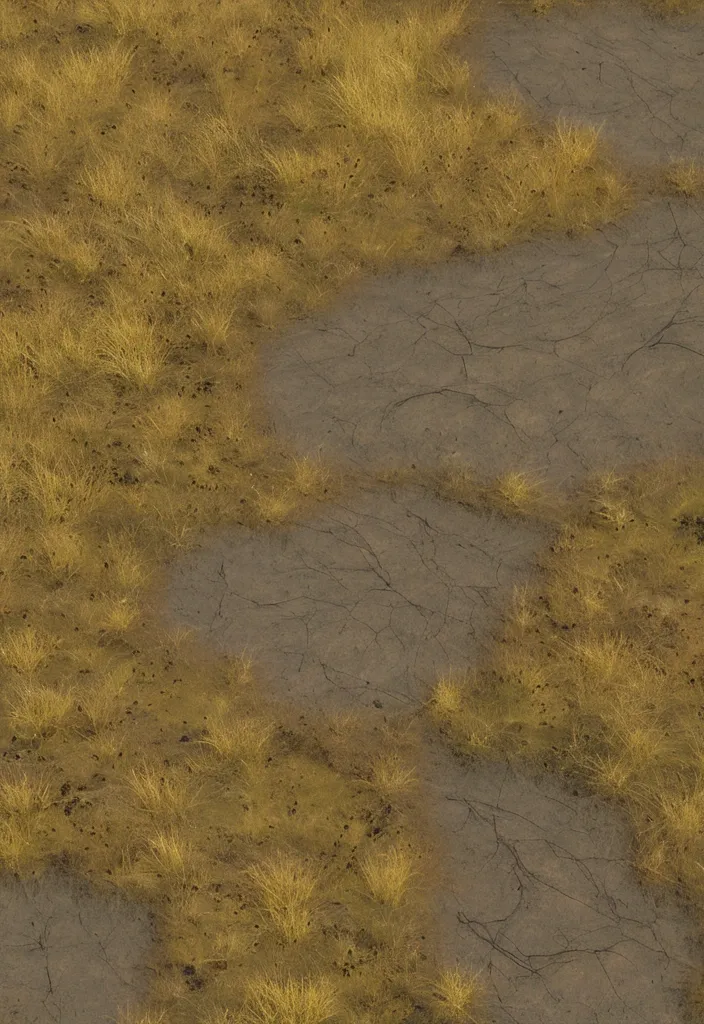
A game-rendered tundra grassland viewed from a top-down perspective. The grass consists of golden-yellow and desaturated brown tones , with subtle variations in hue and saturation , creating a natural yet slightly stylized look. The texture appears soft and dry , with areas of denser grass blending into more sparse patches , where the underlying ground is faintly visible.The distribution of colors forms an organic pattern , with darker , slightly greenish patches near transitions to rocky or barren spots , while the main grassy areas retain a warm , windswept appearance. Some sections appear trampled or eroded , where the grass thins out , revealing a rougher , more muted surface beneath. The texture maintains a balance between chaotic natural randomness and structured , procedural rendering , making it ideal for generating tundra-like terrains. ,
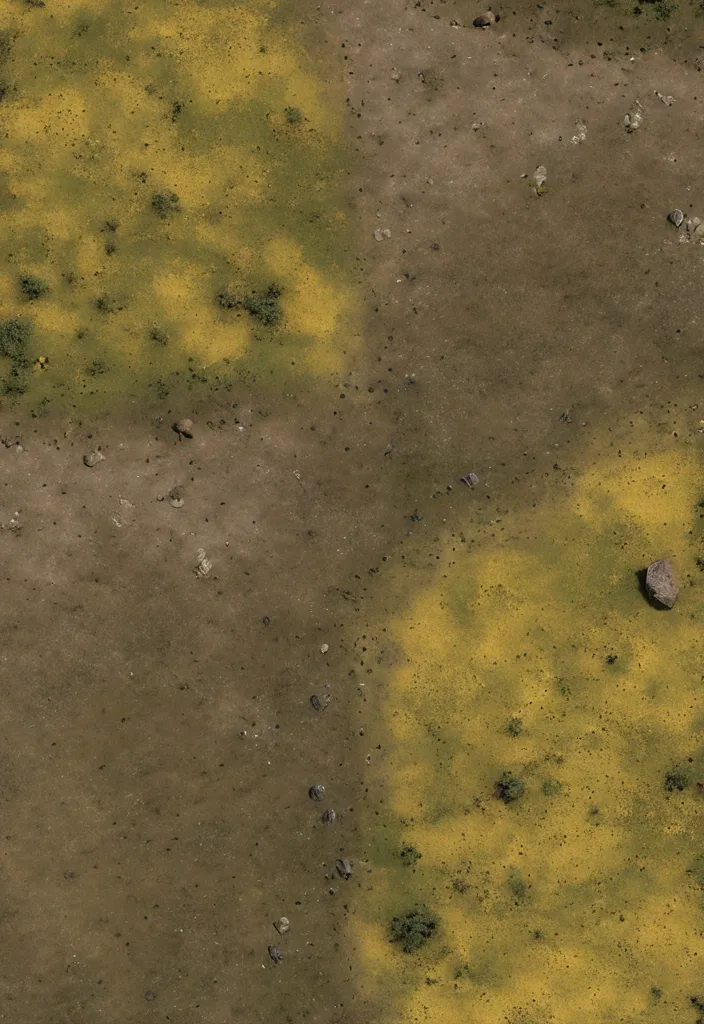
A game-rendered tundra grassland viewed from a top-down perspective. The grass consists of golden-yellow and desaturated brown tones , with subtle variations in hue and saturation , creating a natural yet slightly stylized look. The texture appears soft and dry , with areas of denser grass blending into more sparse patches , where the underlying ground is faintly visible.The distribution of colors forms an organic pattern , with darker , slightly greenish patches near transitions to rocky or barren spots , while the main grassy areas retain a warm , windswept appearance. Some sections appear trampled or eroded , where the grass thins out , revealing a rougher , more muted surface beneath. The texture maintains a balance between chaotic natural randomness and structured , procedural rendering , making it ideal for generating tundra-like terrains. ,
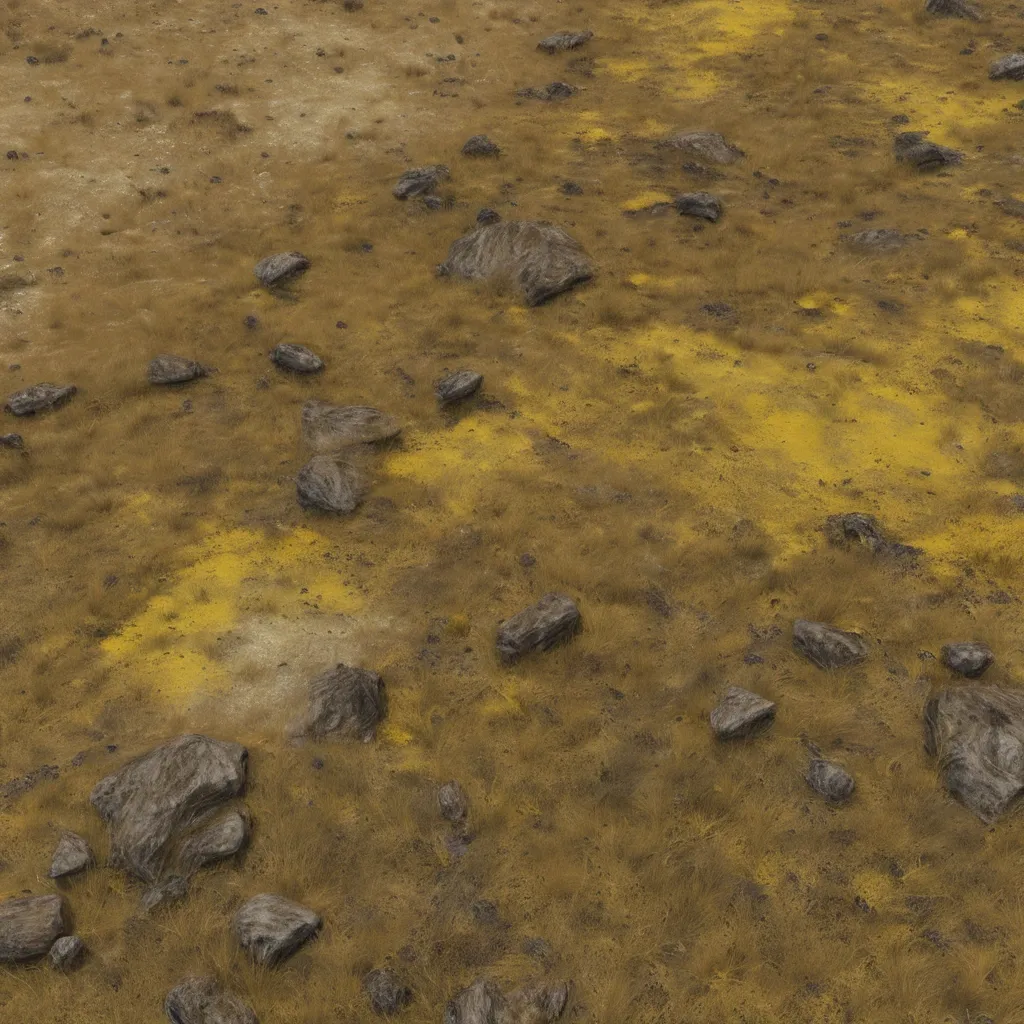
A game-rendered tundra grassland viewed from a top-down perspective. The grass consists of golden-yellow and desaturated brown tones , with subtle variations in hue and saturation , creating a natural yet slightly stylized look. The texture appears soft and dry , with areas of denser grass blending into more sparse patches , where the underlying ground is faintly visible.The distribution of colors forms an organic pattern , with darker , slightly greenish patches near transitions to rocky or barren spots , while the main grassy areas retain a warm , windswept appearance. Some sections appear trampled or eroded , where the grass thins out , revealing a rougher , more muted surface beneath. The texture maintains a balance between chaotic natural randomness and structured , procedural rendering , making it ideal for generating tundra-like terrains. ,
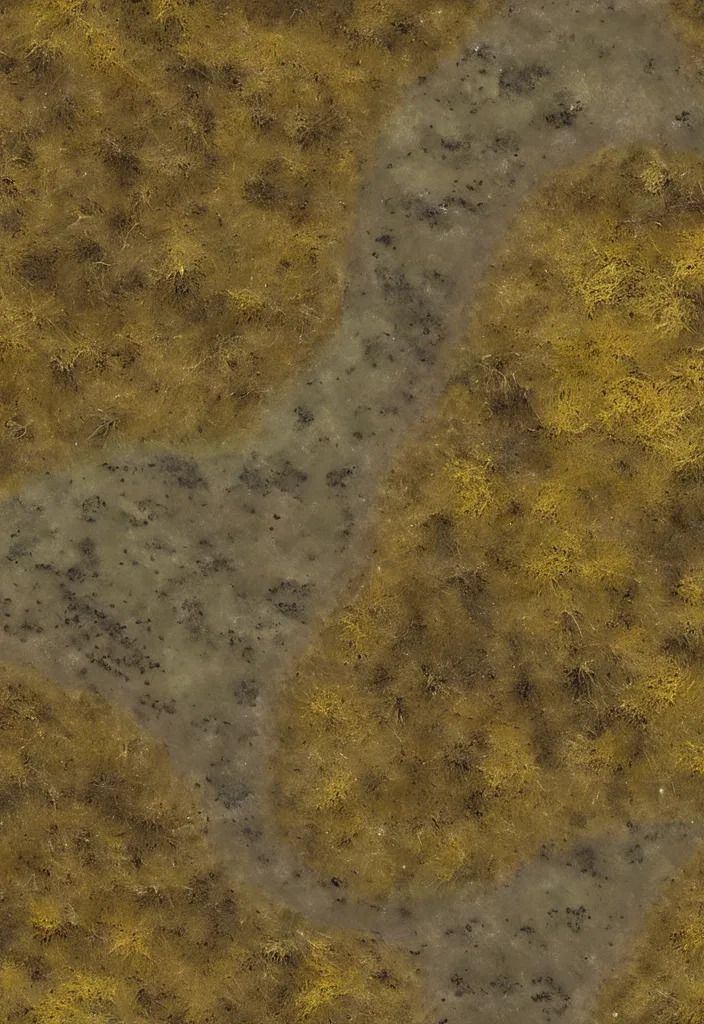
A game-rendered tundra grassland viewed from a top-down perspective. The grass consists of golden-yellow and desaturated brown tones , with subtle variations in hue and saturation , creating a natural yet slightly stylized look. The texture appears soft and dry , with areas of denser grass blending into more sparse patches , where the underlying ground is faintly visible. The distribution of colors forms an organic pattern , with darker , slightly greenish patches near transitions to rocky or barren spots , while the main grassy areas retain a warm , windswept appearance. Some sections appear trampled or eroded , where the grass thins out , revealing a rougher , more muted surface beneath. The texture maintains a balance between chaotic natural randomness and structured , procedural rendering , making it ideal for generating tundra-like terrains. ,
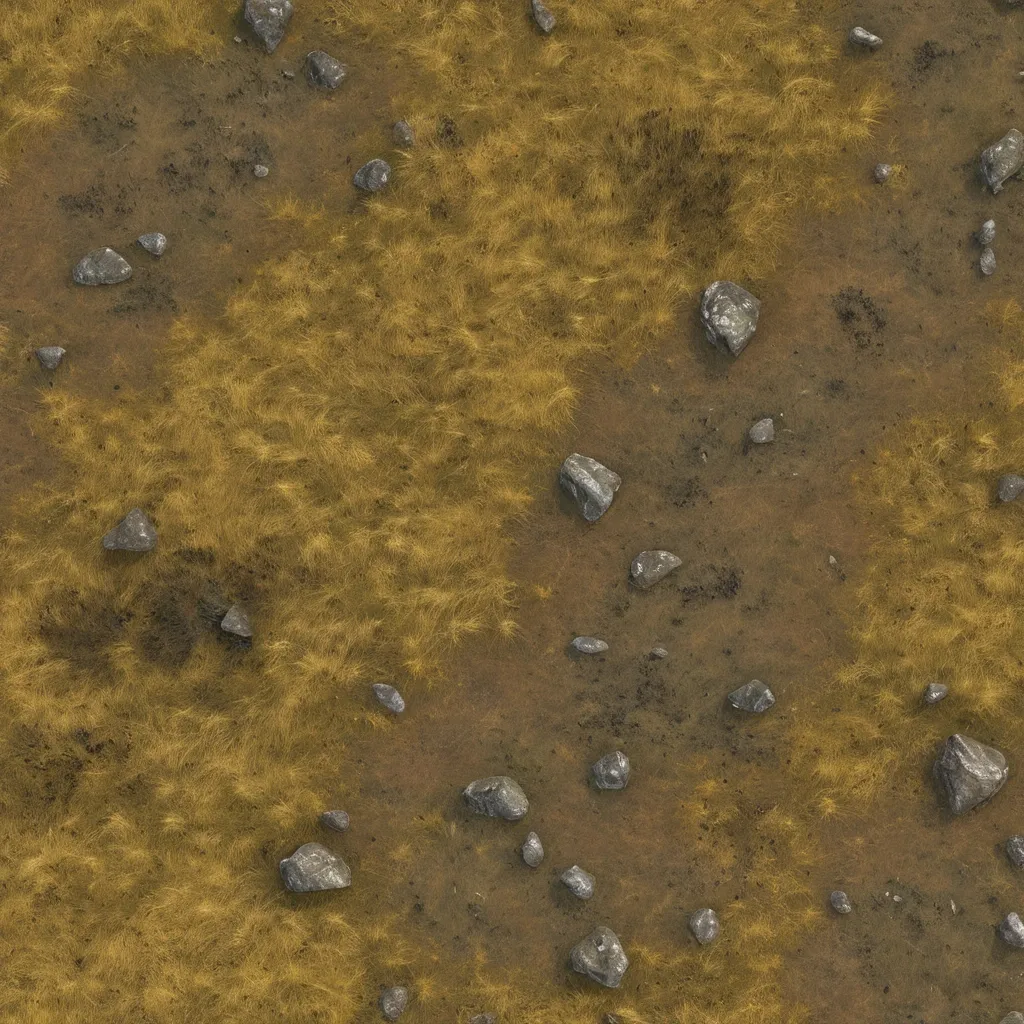
A game-rendered tundra grassland viewed from a top-down perspective. The grass consists of golden-yellow and desaturated brown tones , with subtle variations in hue and saturation , creating a natural yet slightly stylized look. The texture appears soft and dry , with areas of denser grass blending into more sparse patches , where the underlying ground is faintly visible. The distribution of colors forms an organic pattern , with darker , slightly greenish patches near transitions to rocky or barren spots , while the main grassy areas retain a warm , windswept appearance. Some sections appear trampled or eroded , where the grass thins out , revealing a rougher , more muted surface beneath. The texture maintains a balance between chaotic natural randomness and structured , procedural rendering , making it ideal for generating tundra-like terrains. ,
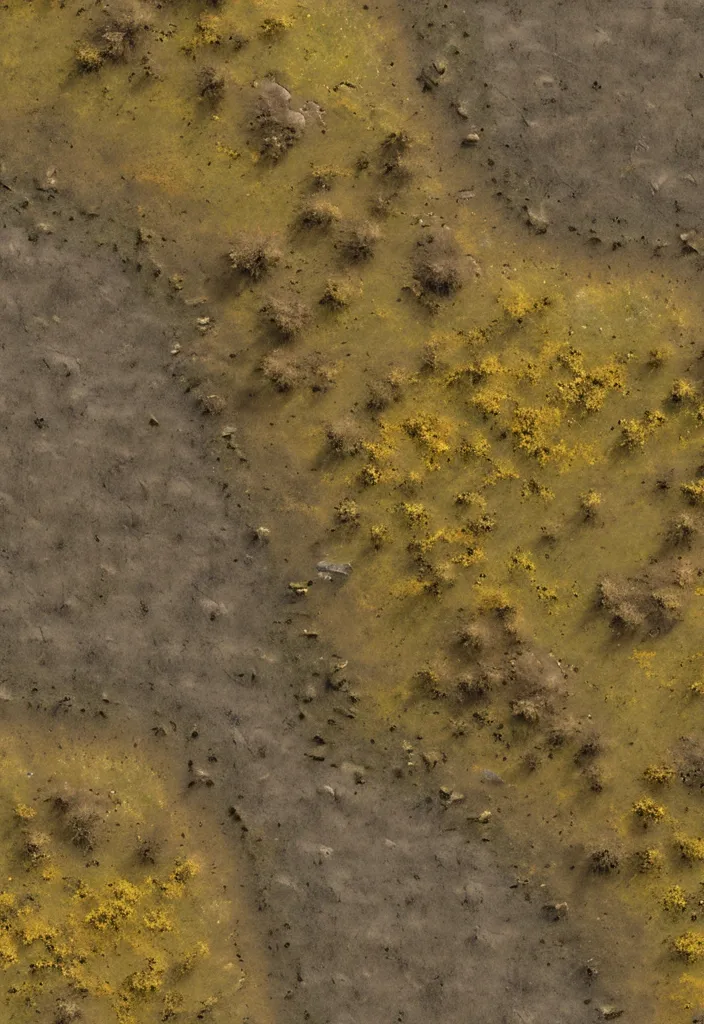
A game-rendered tundra grassland viewed from a top-down perspective. The grass consists of golden-yellow and desaturated brown tones , with subtle variations in hue and saturation , creating a natural yet slightly stylized look. The texture appears soft and dry , with areas of denser grass blending into more sparse patches , where the underlying ground is faintly visible. The distribution of colors forms an organic pattern , with darker , slightly greenish patches near transitions to rocky or barren spots , while the main grassy areas retain a warm , windswept appearance. Some sections appear trampled or eroded , where the grass thins out , revealing a rougher , more muted surface beneath. The texture maintains a balance between chaotic natural randomness and structured , procedural rendering , making it ideal for generating tundra-like terrains. ,
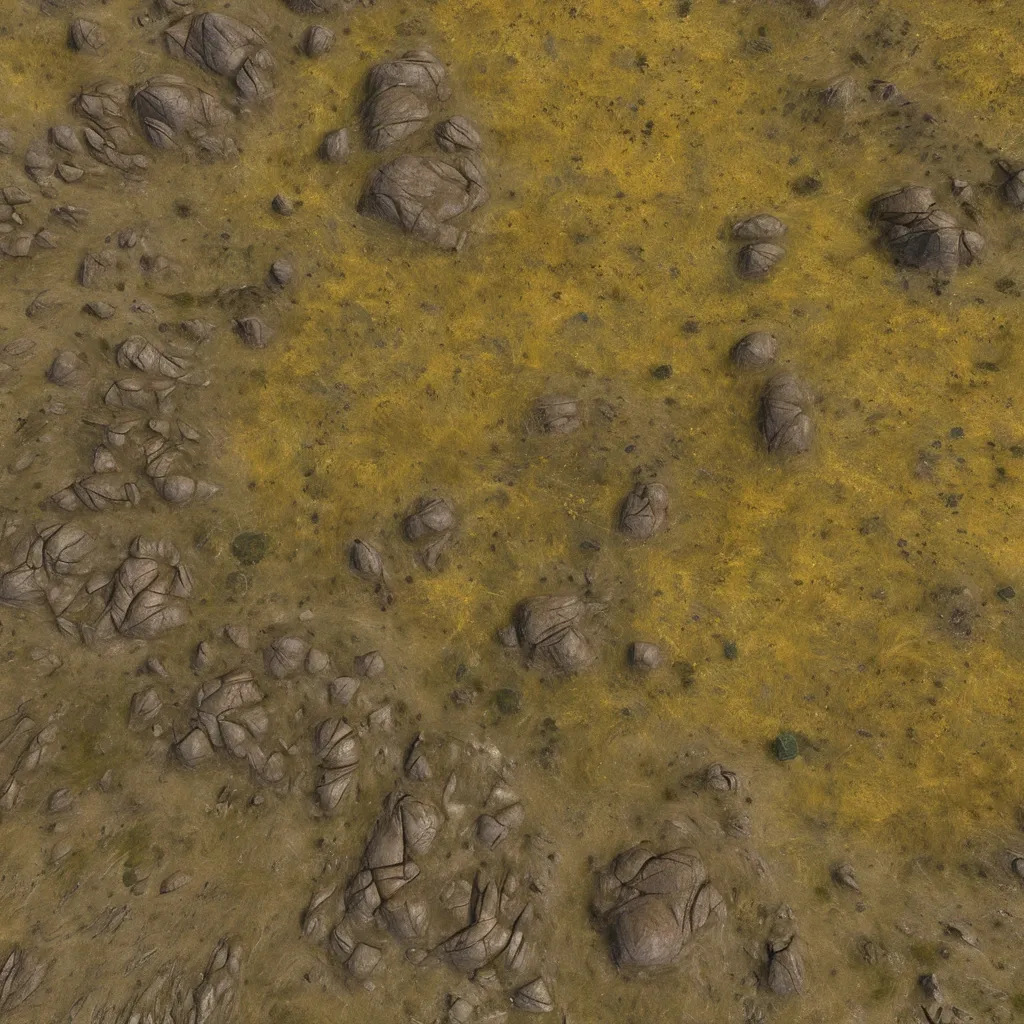
A game-rendered tundra grassland viewed from a top-down perspective. The grass consists of golden-yellow and desaturated brown tones , with subtle variations in hue and saturation , creating a natural yet slightly stylized look. The texture appears soft and dry , with areas of denser grass blending into more sparse patches , where the underlying ground is faintly visible. The distribution of colors forms an organic pattern , with darker , slightly greenish patches near transitions to rocky or barren spots , while the main grassy areas retain a warm , windswept appearance. Some sections appear trampled or eroded , where the grass thins out , revealing a rougher , more muted surface beneath. The texture maintains a balance between chaotic natural randomness and structured , procedural rendering , making it ideal for generating tundra-like terrains. ,
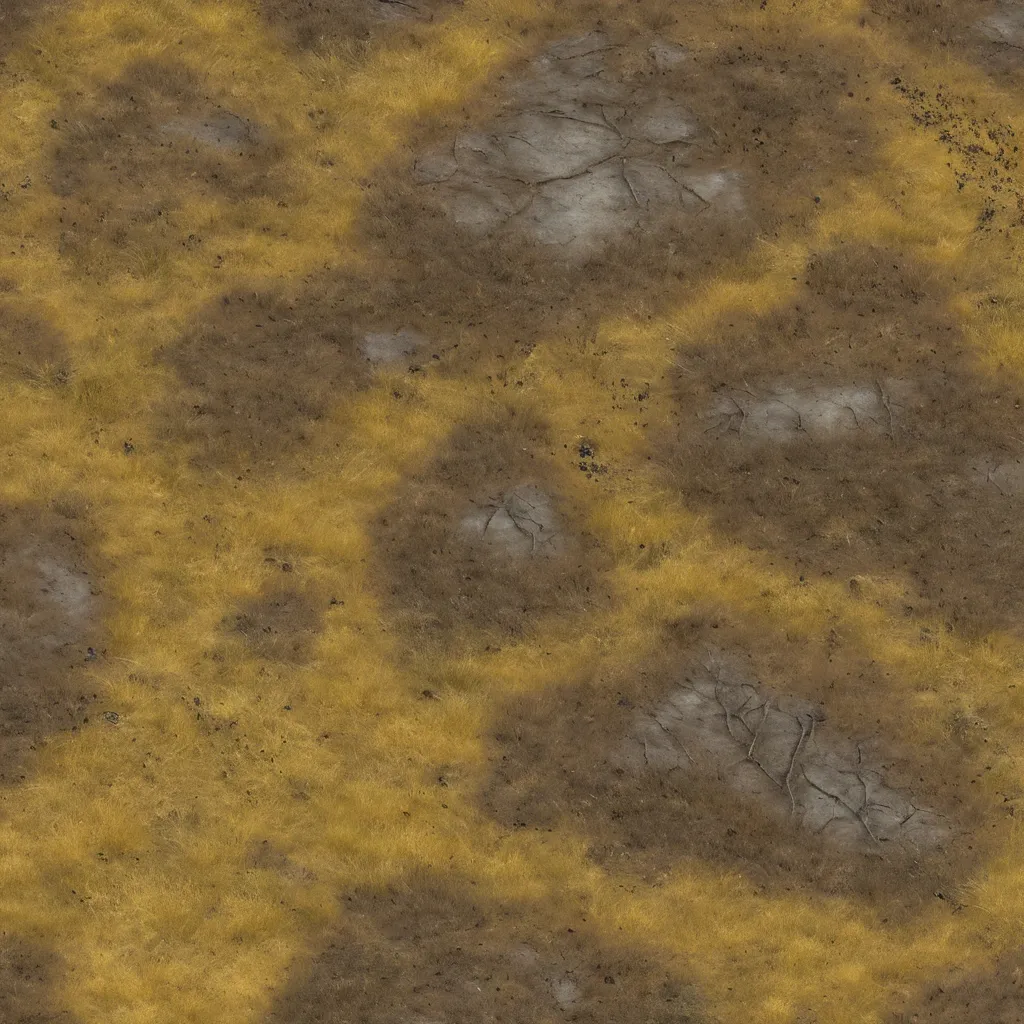
A game-rendered tundra grassland viewed from a top-down perspective. The grass consists of golden-yellow and desaturated brown tones , with subtle variations in hue and saturation , creating a natural yet slightly stylized look. The texture appears soft and dry , with areas of denser grass blending into more sparse patches , where the underlying ground is faintly visible. The distribution of colors forms an organic pattern , with darker , slightly greenish patches near transitions to rocky or barren spots , while the main grassy areas retain a warm , windswept appearance. Some sections appear trampled or eroded , where the grass thins out , revealing a rougher , more muted surface beneath. The texture maintains a balance between chaotic natural randomness and structured , procedural rendering , making it ideal for generating tundra-like terrains. ,
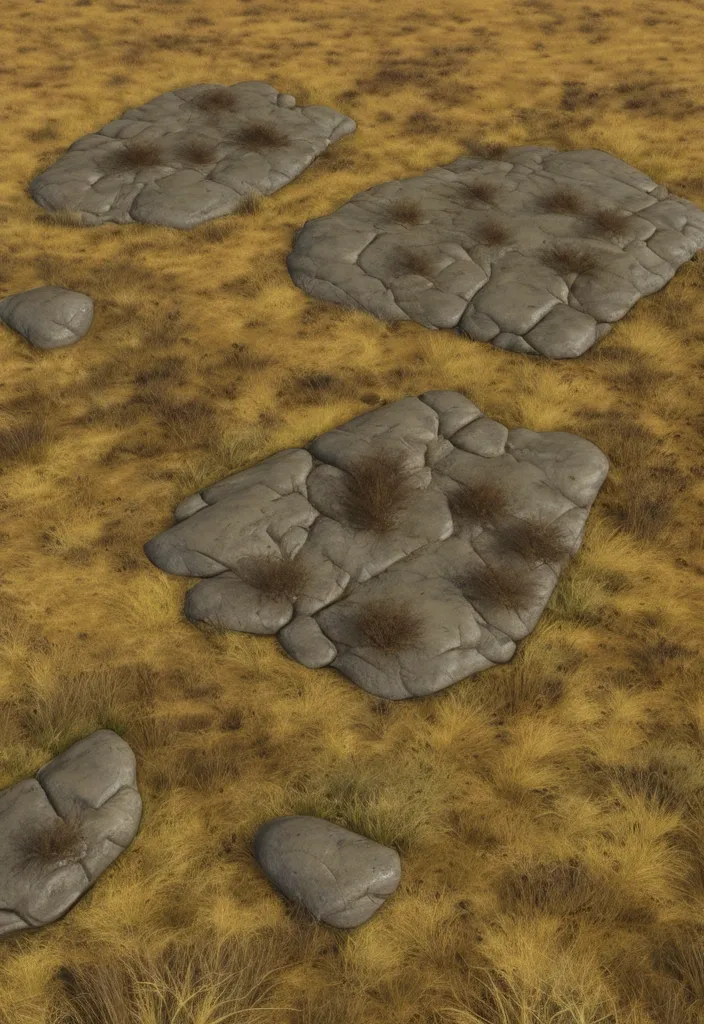
A game-rendered tundra grassland viewed from a top-down perspective. The grass consists of golden-yellow and desaturated brown tones , with subtle variations in hue and saturation , creating a natural yet slightly stylized look. The texture appears soft and dry , with areas of denser grass blending into more sparse patches , where the underlying ground is faintly visible. The distribution of colors forms an organic pattern , with darker , slightly greenish patches near transitions to rocky or barren spots , while the main grassy areas retain a warm , windswept appearance. Some sections appear trampled or eroded , where the grass thins out , revealing a rougher , more muted surface beneath. The texture maintains a balance between chaotic natural randomness and structured , procedural rendering , making it ideal for generating tundra-like terrains. ,
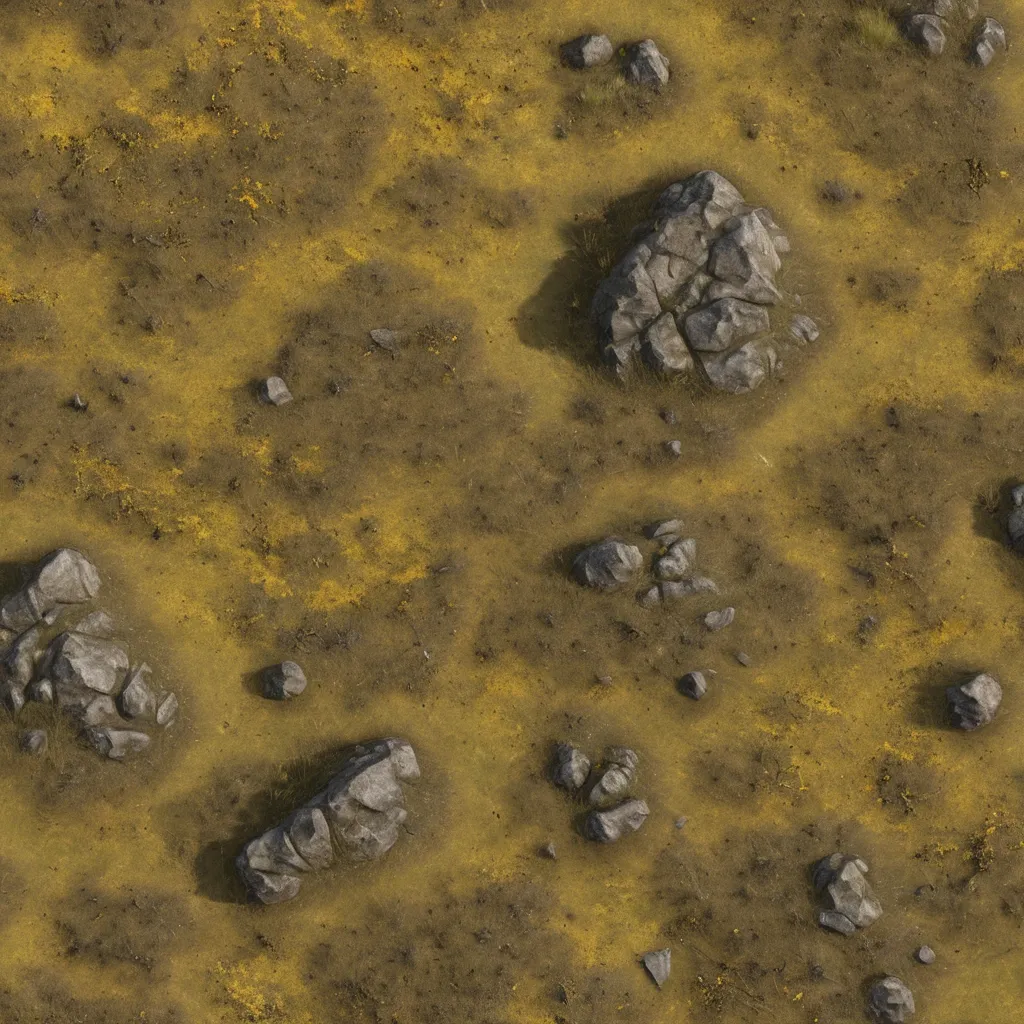
A game-rendered tundra grassland viewed from a top-down perspective. The grass consists of golden-yellow and desaturated brown tones , with subtle variations in hue and saturation , creating a natural yet slightly stylized look. The texture appears soft and dry , with areas of denser grass blending into more sparse patches , where the underlying ground is faintly visible. The distribution of colors forms an organic pattern , with darker , slightly greenish patches near transitions to rocky or barren spots , while the main grassy areas retain a warm , windswept appearance. Some sections appear trampled or eroded , where the grass thins out , revealing a rougher , more muted surface beneath. The texture maintains a balance between chaotic natural randomness and structured , procedural rendering , making it ideal for generating tundra-like terrains. ,

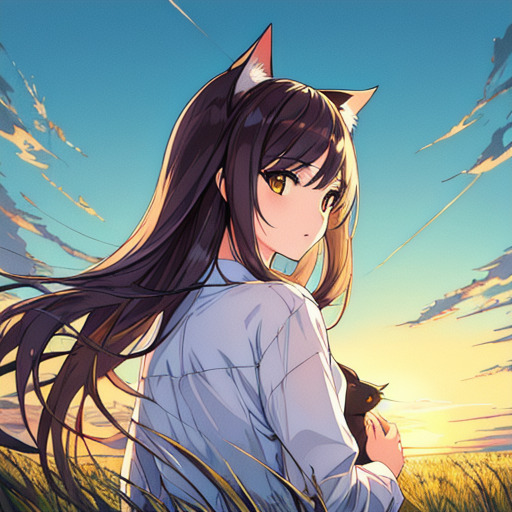
masterpiece , best quality , ultra-detailed , illustration , straight on , a girl , portrait , grasslands , looking back , cat ,
